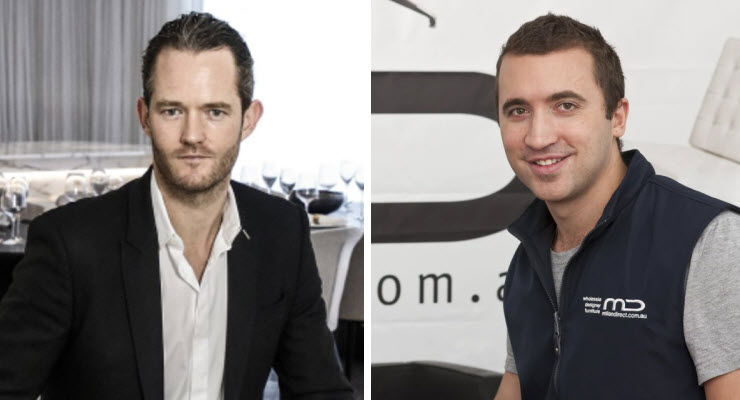
The Australian Financial Review Rich List (and its peer, John Stensholt’s “The List”, which appears in The Australian) are financial voyeurism of the highest order. The far more interesting list, though, is the AFR Young Rich List, which chronicles Australia’s richest self-made millionaires under 40.
While the “proper” list has become monotonous, full of old white blokes who own mining companies or swathes of property, the young list is filled with tech entrepreneurs and fast-growing companies. This makes it both interesting and, unfortunately, somewhat inaccurate.
In defence of the AFR, producing a young rich list is incredibly difficult and the AFR’s team do as solid a job as anyone could. Most people under 40 own private companies in fast growing sectors, which are both opaque and difficult to value. Throw in an asset bubble where companies are receiving revenue multiples for businesses likely to never make a profit and the degree of difficulty is even higher.
Researchers also rely to a large extent on participants telling them the truth. This is especially tricky, since many members use the list as a PR exercise to raise more equity or debt for their business or next development.
But with all those caveats out of the way, it’s fair to say that the 2020 AFR Young Rich List, which came out a few weeks ago, contains a few entries that may not age too well.
Robert Chamberlain
The mysterious Chamberlain appeared in 2019 with a $55 million valuation, which leapt to $253 million this year. Chamberlain’s main businesses, Huno and AirfaresFlights, are in the hyper-competitive and relatively low margin metasearch part of the travel sector (metasearch is basically affiliate marketing to send traffic to online travel agents and get paid a small commission).
Chamberlain’s valuation was especially curious given few travel businesses grew their valuation this year (let alone five-fold) and no one seems to have ever heard of Chamberlain or his websites. According to web analytics service SimilarWeb, the sites have so little traffic that they aren’t even able to register them on the site.
As a comparison, the impressive HotelsCombined business was sold for US$140 million in 2018 and generated upwards of $25 million in EBITDA and had tens of millions of annual unique visitors.
Chamberlain’s LinkedIn page refers to little else other than his Rich List listing.
AFR valuation: $253 million
Our valuation: Close to zero
Tim Gurner
Gurner, who is famous for trademarking his own name and accusing an entire generation of spending too much on smashed avo and not enough on apartments, built a successful property management and development business.
Gurner shrewdly avoided calamity with his Fortitude Valley development in Brisbane as few years ago and has prospered since. So much so that the AFR has regularly valued his wealth at more than $500 million (this year, he was $580 million).
But property insiders have long viewed the AFR’s estimate with extreme scepticism, pinning Gurner’s wealth well below the $100 million mark.
Gurner deserves plaudits for building a business with no capital by partnering with property owners and essentially clipping a very small equity stake and a project management fee, but many in the property sector think the AFR massively overstates Gurner’s net worth.
AFR valuation: $580 million
Our valuation: $50 million
Grant Schaffer
Schaffer was an early backer of proptech affiliate business Updater. Updater controversially delisted from the ASX back in 2018 under the promise of venture capital investments from top-tier money managers Sand Hill Road. The infusion finally came in late 2019, but it was in the form of convertible debt from the relatively unglamorous investment arm of the US National Association of Realtors.
The AFR used the largely irrelevant $1 billion conversion price to calculate Schaffer’s higher net worth, seemingly not understanding the difference between a convertible note and an ordinary equity issue.
AFR valuation: $88 million
Our valuation: $10 million
Dean Ramler
My old neighbour did a brilliant job building Milan Direct (with backing from Ruslan Kogan), before selling to Temple & Webster (T&W) ahead of its initially disastrous, and then wildly successful, IPO listing.
Ramler shrewdly avoided calamity and held T&W shares as they rose from 15 cents, before selling most (if not all) of his shareholding in August 2018 for around $1 per share. This was disclosed to the ASX here.
In T&W’s 2018 annual report it stated that Ramler held 6.4 million shares, but he wasn’t listed in the 2019 annual report, so it’s likely that he reaped around $6-7 million for holding. Despite this very publicly available documentation, the AFR claimed that Ramler still held “about 5% of the $1.3 billion company”.
AFR valuation: $82 million
Our valuation: $10 million








“… producing a young rich list is incredibly difficult… private companies in fast growing sectors, which are both opaque and difficult to value.”
Oh yes. The Guardian‘s experience years ago with its UK Young Business Person of the Year prize illustrates the perils very well. The predictive power of the award was quite astounding. After the prize had been awarded for several years, somebody pointed out that almost every winner had soon afterwards either gone spectacularly bankrupt or else been arrested for fraud.
The Guardian quietly closed down the competition.
Schwab doing what he does – boosting.
This whole rich lister young people thing is yet another trope of ‘pull yourself up by the bootstraps’ and ‘everyone can get rich so you really don’t want taxes on the rich, it could be you!!!’